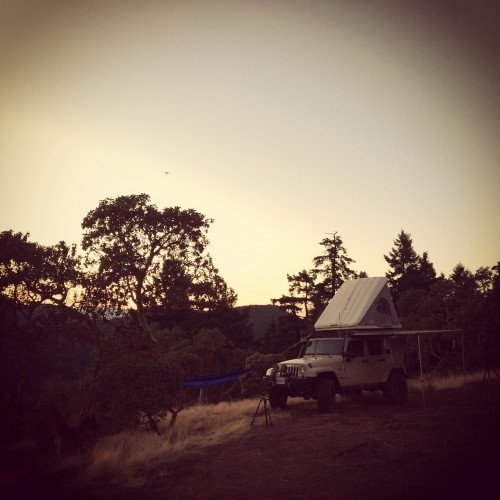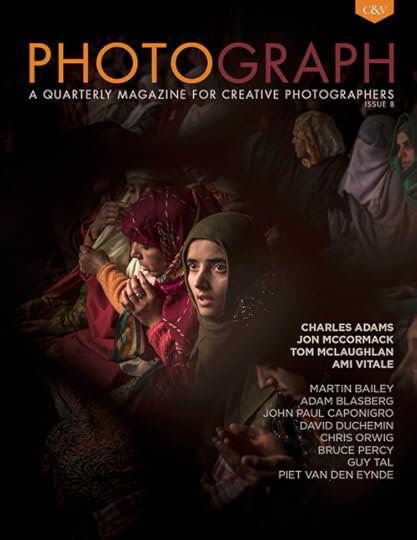David duChemin's Blog, page 23
September 10, 2014
Photographers and Money. We Should Talk.
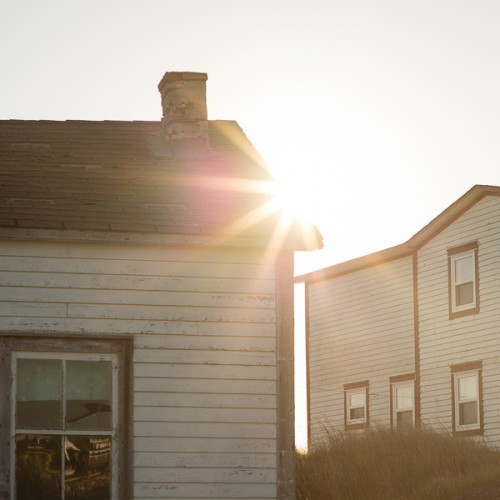
One day I want to sit down with my readers, somehow, and have an honest conversation about money, and how we make it and manage it as creatives. I don’t know how it’ll happen – it’s hard enough having honest conversations about things that aren’t so surrounded by fear and shame and a general, “I don’t want to talk about it” feeling. Which is odd, frankly, as it’s one of those subjects that, if spoken about freely, could help so many people. The desire for that conversation is why I wrote VisionMongers, and most recently How to Feed a Starving Artist. It’s also why I wrote this blog post (Chains All the Same). And it’s why I’m writing this one too. But we need to start talking about it. I’m so tired of people pussy-footing around the subject when so much good can come from not struggling with it all the time.
So until we can all sit down and have that conversation without anyone feeling judged for how much they do or don’t have, what they do or don’t know, or how they do or don’t make the living they want to, here are 3 mistakes I see photographers making with money, and they’re easy to fix.
1. Spending Money on Gear.
Just stop buying so damn much of it. And stop putting it on credit. I know, you’ve heard it before. But if you’re still buying gear in the hopes that the gear will help make you more money, you’re wasting it. Money saved is a better bet than money hoped-for in most cases. Use the gear you have. Reconcile yourself to not being the coolest guy on the block with the coolest gear. Trade that for more freedom to make great photographs with the gear you have. Impress people, if you must, with your images. Save the money. And when a client really, really, needs you to shoot with the new $4500 Zeiss 85/1.4 lens, or $40,000 Phase One system, rent it and bill the client for the cost. Money spent on technology is a poor bet. For many photographers it’s obsolete before you can make a return on it, and by then you’re already jonesin’ for something new, something better, something that – this time! – will really make you some money. Stop the insanity.
2. Not Paying Yourself First.
Save your money. Be aggressive about it. Put it somewhere you can’t touch it. And then make damn sure you’ve got enough to pay the tax man. Put 10% aside, before you do anything else, for you. In savings. And when I say savings, I do not mean savings for new gear. Long term, interest-earning savings. Then put an additional X% aside (ask your accountant how much) for taxes. If you don’t have an accountant, get one. Stop pretending you know more about money than the experts, unless you do, in which case, close this and go make some photographs. But pay yourself first. Don’t wait to save money or pay your taxes with your left-over money. There is never left-over money.
3. Not Selling Your Work.
I know, I know, no one’s buying. Bullshit. You’re not selling. By selling I do not mean you’ve got a BUY NOW link on your site. That’s passive. And I’m willing to bet you’re marketing to photographers. Listen, photographers don’t buy the work of other photographers. It’s rare. You know who buys photographs? Magazines. Companies. Professional offices. Interior designers and architects. Hotels and B&Bs. Hell, people at craft fairs are making more money than most of us, selling $50 prints. You know why? They’re selling. They’re hustling. And they aren’t at home complaining that no one’s buying, while convincing themselves their work is worth too much to let it go for less than $500. I know it’s not easy, but the internet isn’t a panacea. It’s not a substitute for building an audience of real people who want to buy your work. That is the hard work, friends. Finding the audience that wants your work, and then asking them to buy it.
When’s the last time you sat in a restaurant, thought, “My work would look great on these walls,” and then did something about it? When’s the last time you sat in your doctor’s office and thought, “Wow, the work on these walls is dated. I’d love to see mine up there,” and then did something about it? Believing people will just buy your work because it’s amazing won’t get you where you want to go. There’s mediocre crap on walls everywhere, and you know why it’s there? Because someone hustled and talked to someone and offered them something we weren’t offering because we were too busy complaining that the market for stock imagery has collapsed or “no one’s buying.” It’s easy to complain, it’s hard to hustle. Get creative. Connect. And then offer your work (no, I don’t mean for free). If you want to sell prints, make a list (right now) of 10 local businesses you have relationships with (doctor, lawyer, dentist, accountant, favourite restaurant…) and then go talk to them. Ask them: what would it take to get my work on your walls? Be creative. Connect. Be persistent. If what you offer is of value, they’ll thank you.
I know this stuff isn’t easy to talk about. But if we can be as creative as we are with our photography, or the justifications we make to buy the gear we don’t need, then we can be creative about how we approach money. There are a lot of resources out there – great places to learn more about money. Some of them are listed in How to Feed a Starving Artist. Get it. It’s only $10. If you can’t afford it now, wait until Black Friday and it’ll be half price, though you didn’t hear that from me. And if you’re literally on the edge of financial collapse, email me and we’ll see what we can do. I know the publisher and he’d rather you get the book for free than go bankrupt. Or go to Amazon and find some books, written by another author, if you feel this is just a push for you to buy my book. Or talk to someone who has some and knows more about it than you do. Whatever you do, don’t let the fear, shame, or whatever other frustration, stop you from getting on top of it. Life is too short to live in bondage to debt and financial pressures if there are things you can do to get out from under it and find the freedom to do the work you love.
Until we can have the conversation I’d love to have, I’d like to try something, even knowing it might not work. Leave your questions in the comments below and if there is enough interest I’ll pull them together and record a small audio podcast with my thoughts and perhaps that rather one-sided conversation will be helpful. I came to my wisdom about this stuff the hard way, but I don’t believe in secrets and am happy to share what I’ve learned and continue to learn, if it’ll get you a little closer to living your dreams.
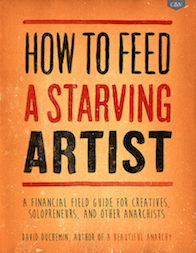 How to Feed a Starving Artist, A Financial Field Guide for Creatives, Solopreneurs, and Other Anarchists is available from Craft & Vision as a PDF for $10 and from Amazon in the Kindle format for the same price.
How to Feed a Starving Artist, A Financial Field Guide for Creatives, Solopreneurs, and Other Anarchists is available from Craft & Vision as a PDF for $10 and from Amazon in the Kindle format for the same price.
The book itself isn’t magic, and there’s no shortcuts to this stuff, but there’s a lifetime of experience in this book, both mine and others, and if it stirs you to see things in a new way, or to take action on things you already know you should be doing, or just gives you one new idea that helps stir the embers a little on a business that’s lost its fire, it’ll have done what I hoped for it. You can read – or leave – reviews of the book here.
September 8, 2014
Be Your Own Patron
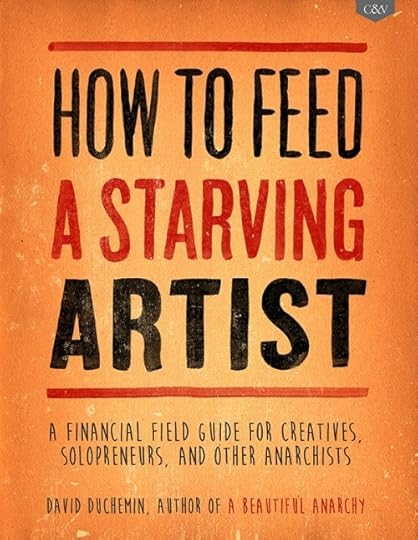
Remember those days of old when creative people did what they did because some guy with money paid them to do it, all for the privilege of calling themselves a patron? Well those days are over. Unless you get smart – and creative – with your money and become your own patron, in which case the time has never been better.
Like many creative people, I’ve had a difficult relationship with money, learning my lessons the hard way. But since I left college 20 years ago I’ve made my living entirely from my creativity, gone bankrupt, and started all over again. In the last 5 years I’ve seen Craft & Vision, the publishing company that I accidentally started, go from offering a $5 eBook, wondering if anyone would buy it, to a company that grosses 7 figures annually and helps me and 20 other photographers get closer to living our own dreams. Even writing that makes me nervous, because I don’t want to be seen as bragging. And I don’t want to make it sound easy. It’s just that I’ve found the right teachers (including my own experiences) from whom to learn about this difficult subject, and I’ve been willing to unlearn the stuff that I learned over my first 30 years. And I want to share that with you. Today we’re launching How To Feed a Staving Artist, A Financial Field Guide for Creatives, Solopreneurs, and Other Anarchists.
How To Feed a Starving Artist is what I know about making and saving money. It’s a book about freedom, possibilities, and wisdom. It’s a book about money for people who don’t want to talk about money and feel like they have to take a shower when they do. I wrote it because experiencing financial freedom, even 5 years ago when my income was still so much less than it is now, has been one of the greatest freedoms of my life. I love that freedom and am deeply grateful for it. My relationship with money has completely changed, in part because I’ve stopped seeing it as a dirty thing and started seeing it as something that brings possibility. I can give my time and money to whom I choose, and generously. I can travel to places I want to see, and do the work I choose to do. I can share my life with the people I love in new and deeper ways, like taking my mother on safari. It’s not about money, it’s about freedom and I want others to experience that.
This is a book about money for people who don’t want to talk about money and feel like they have to take a shower when they do.
There are no secrets in this book. No incantations or self-affirmations. It’s simple, solid, financial wisdom, told through my own story and lessons learned, combined with creative ways we can, as creative people, be our own patrons. Sounds great, right? It is, but that doesn’t mean it’s easy. It’s simple, but it’s hard, and anyone that tells you otherwise is selling you snakeoil. I’m as honest as I can be in this book, and where others have more expertise than I, like my financial planner, or a CPA who specializes in working with creatives, or my manager, Corwin, and other creatives that have wrestled their way out of a hole or made a good living while doing what they love – I include discussions with them. There’s also a list of the books that I’ve found helpful on my own journey.
Download the first two chapters of How to Feed A Starving Artist, here.
Read reviews on aBeautifulAnarchy.com.
Between you and me, I love teaching photography, and find so much pleasure in seeing others create something beautiful. But I take greater pleasure in seeing people create something beautiful of their lives, and contributing in some small way to that. It’s why I wrote A Beautiful Anarchy, and why I’ve found the courage to write How To Feed a Starving Artist: A Financial Field Guide for Creatives, Solopreneurs, and Other Anarchists. Money’s not the point, not even remotely. But money makes things possible. If you want to get a better handle on your finances, stop stressing out about making ends meet, and want to get closer to “living the dream” by doing what you love, How To Feed A Starving Artist is available today for $10 as a downloadable PDF or for the Amazon Kindle for the same price (There are no plans to release How To Feed a Starving Artist as a printed book.). And if you haven’t yet picked up a copy of A Beautiful Anarchy, you can get both ebooks in a bundle for $16.00.
Buy How to Feed A Starving Artist at
CraftAndVision.com or aBeautifulAnarchy.com.
September 5, 2014
Postcards from Fogo Island
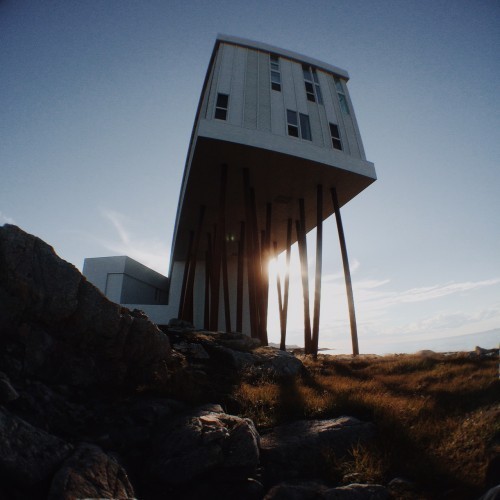
If you’ve been following my Instagram feed, you’ll have seen these, for which I apologize. We’re staying for a couple nights at the Fogo Island Inn, a place of astonishing beauty and hospitality – both the Inn and the island itself, on which we keep extending our stay. It’s an inspiring place for a number of reasons, not the least being the gift this Inn has been the the island itself. For me it is also a place for my muse to dig in, surrounded by rocks and waves and early mornings driving around the little island with my cup of coffee and my camera. Yesterday I saw my first caribou on my morning drive, this morning two more. There’s a feeling of Iceland here, as Canadian as it is, and there’s a similar feeling of vast space and rugged, mangy, elegance that I adore. The food is amazing and the people are warm and beautiful. It’s one of those places I might never leave, if not in body then certainly in spirit. Right now the windows are open in my room and I can hear nothing but surf, and it’s calling me to grab the camera and head to the short. As usual I can’t escape the feeling that none of the photographs I’m making are worth anything, but the long hours of exploring, seeing what there is to be seen, are worth more than the photographs could ever be.
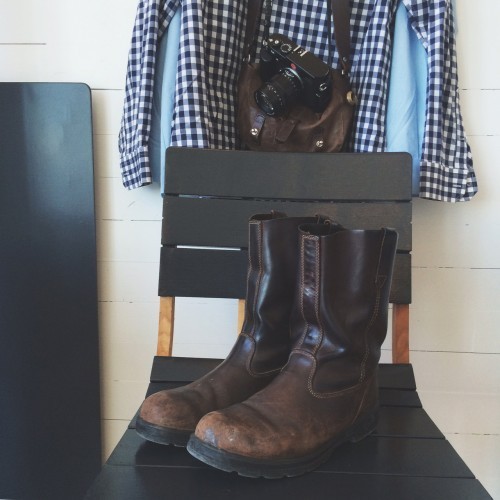

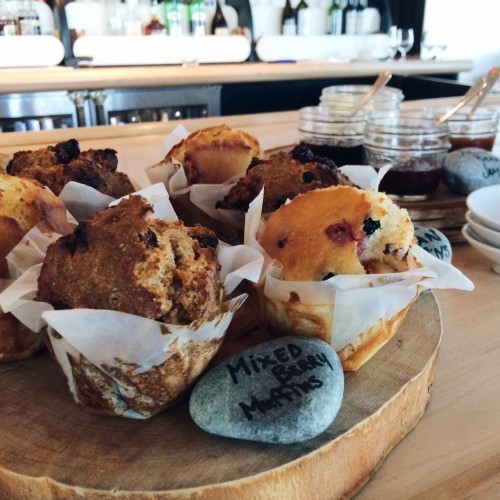
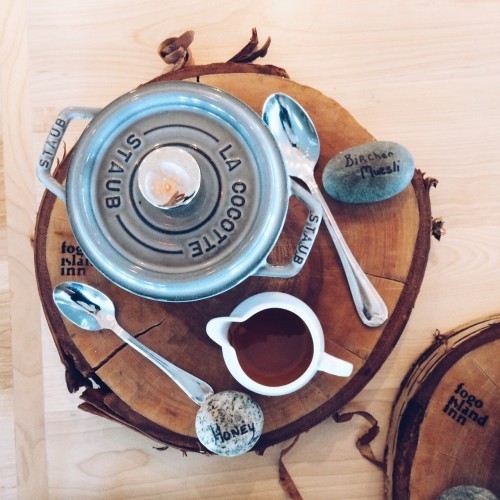
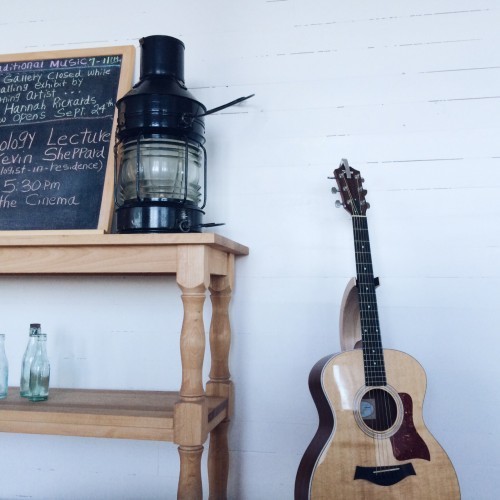

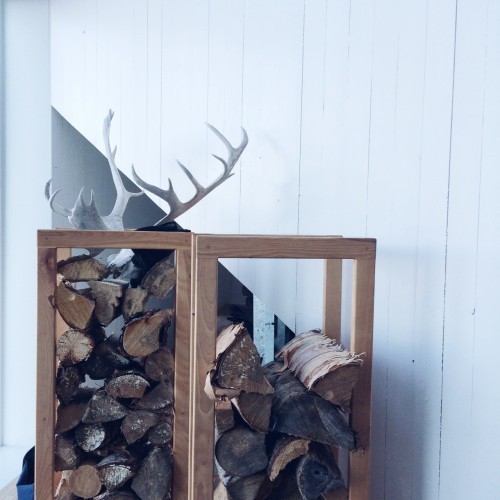
August 29, 2014
MindShift Filter Hive

Hello from the windy and rainy coast of Newfoundland where we’re enjoying the fallout from tropical storm Cristobal!
A few months ago I starting looking for a better way to deal with my 100mm Lee / Singh Ray filters and the various things I end up cramming into my pockets – spare batteries, filter holder, cable release, lens cloths – and found the MindShift Filter Hive. My previous filter wallet, from Lee, was fine, but all it did was carry filters. That was it. And no one I know grabs a camera and a couple filters without needing some other things.
It won’t make my photographs better but it makes the process of making them a little easier, and that in turn makes me a little more patient and perceptive, two things that will dramatically affect the photographs I end up with.
The Filter Hive fits on my belt or clips with a loop around my tripod allowing me to work with it and remain hands-free. It holds several filters at once, allowing me to switch back and forth without putting something in my mouth or between my knees, both techniques that have resulting in scratched filters and a sudden loss of sense of humour. The filters slide in nicely, are kept clean, and the dividers are colour coded, so I know exactly which filter is in which slot – my 3-stop hard grad is between red and green, for example. And to sweeten the deal, there’s room inside for a few extras, and a zipped pocket on the front that’ll hold a couple batteries. It’s the little things that make life easier, and this allows me to keep all the important stuff in one place, clip it to my tripod and go, only having to make sure my camera is slung over my other shoulder. It won’t make my photographs better but it makes the process of making them a little easier, and that in turn makes me a little more patient and perceptive, two things that will dramatically affect the photographs I end up with.
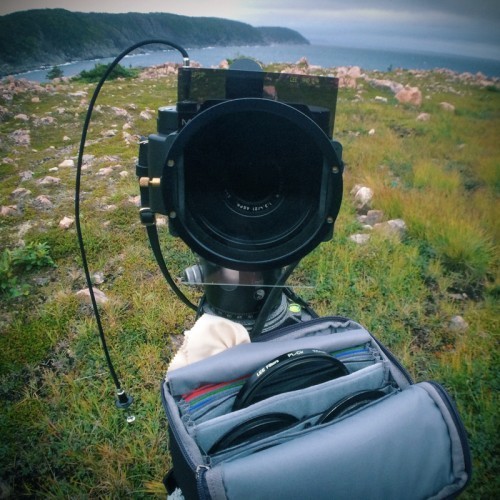
For more information, check them out on the website – I’m sure I’ve missed a couple features. If I remember right, the Filter Hive goes for about $55, and there’s a smaller one, for smaller screw-on filters, called the Filter Nest, if you don’t use the larger Lee-style filters.
August 25, 2014
Postcards from Newfoundland
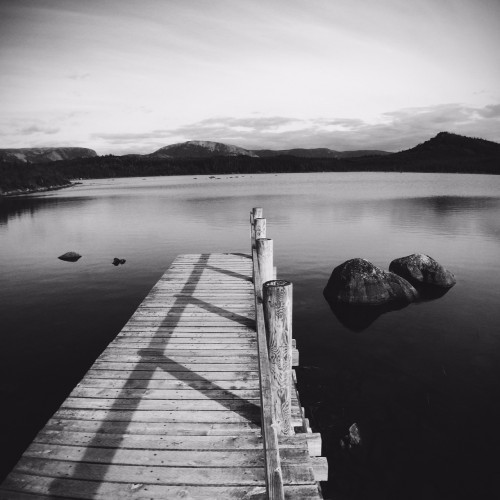
We’re 9,000Km, and 25 days, into this trip and I’m beginning to find a rhythm, learning to relax and see the place as it seems to want to reveal itself. I’ve photographed almost the whole trip so far on my iPhone, enjoying the simplicity and the constraints of the square frame I’ve chosen, in part because of Instagram, in part because it seems to fit these more intimate, simple photographs. What freedom to be without the heavy gear and just focus on the experience. I’m processing all my work with VSCO’s excellent app – particularly loving some of their black and white treatments. It’s simple stuff – not much more than a good exposure and mostly just processed with their B5 “film”.”
We’ve seen moose, and this morning a pod of dolphins playing in the water just off the road as we pulled into Woody Point. And I’ve seen Western Brook Pond, in Gros Morne National Park, a place I’ve wanted to see for years, though I mourn the loss of my ability right now to do the hike that would take me to the views from the top of the mountains that were once fjords. And I’ve sat for hours in front of a roaring campfire (though I’m reluctant to mention that my sitting too close got the soles of my Blundstones good and melty. Oops. These poor boots have take a beating these recent years…)
This month Craft & Vision turns five years old. Last year that involved public humiliation for me. There was a tutu involved. This year it’s just a 5-day sale. If you subscribe to The Contact Sheet, C&V’s newsletter, you’ll get a short note each day letting you know which product is on sale for one-day only. Or you can go to the site and look for the orange sale stickers. I won’t spill it all, but for one day only my book, SEVEN will be $50 instead of $90, and the Created Image Video Series, Volume 01, will be $20 instead of $80. Each for one day only. If you’re looking to get in on a couple great deals, now’s the chance. Thanks for your support, we’d never have made it to 5 years without you. Now, my coffee’s gone cold and the road is calling. See you soon!
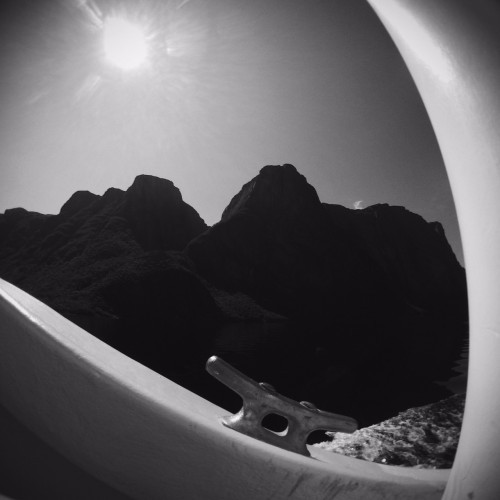
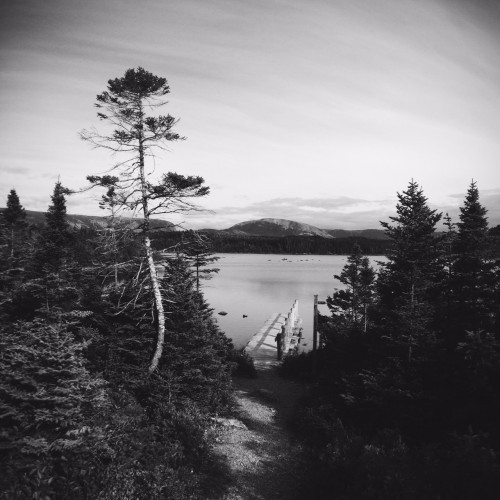
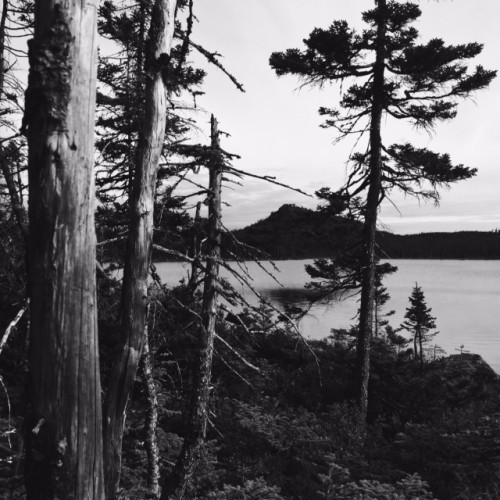
August 18, 2014
Postcards from Labrador
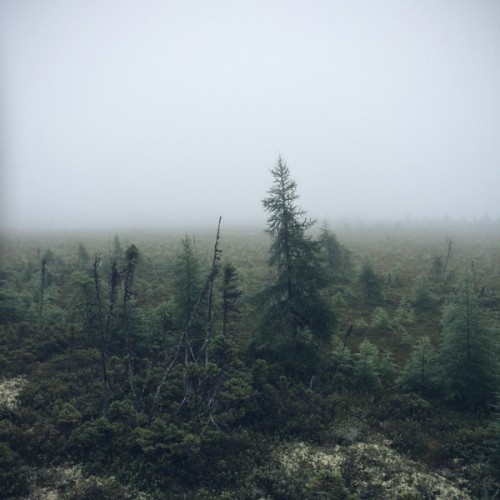
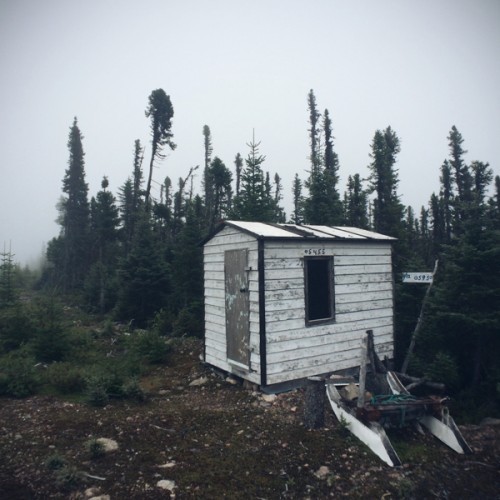
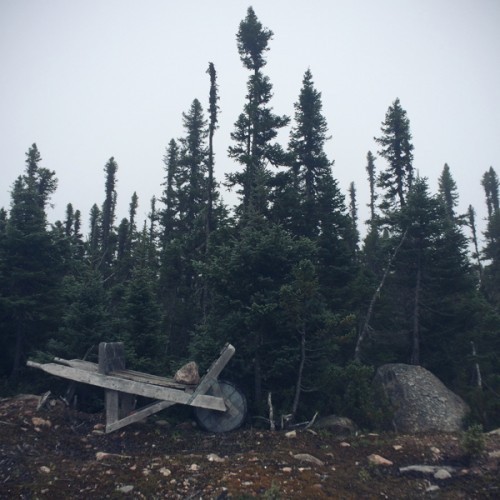
After almost 7800km across this vast country, we arrived on the coast of Labrador a couple hours ago, to fog. The last couple hundred kilometers like so many before them, along bone-jarring rutted roads flanked with pine trees that seem at once both arthritic and anemic. The roads just seemed to go on and on, through sun, rain, and endless blackflies. This is my country, and I love it fiercely. The thousands of kilometers we drove just to get to Labrador were long enough, but this last thousand was the most rugged, and to me, some of the most beautiful. Trees and rocks, and endless roads to ourselves, the solitude broken only by large trucks connected to mines, dams, or forestry industry, and the occassional RV that seemed way out of it’s element, and even they became less and less as we approached the coast. And now we’re here and it’s foggy and there’s over a month ahead of us to explore, to make photographs, to find out what lies beyond the next
corner.
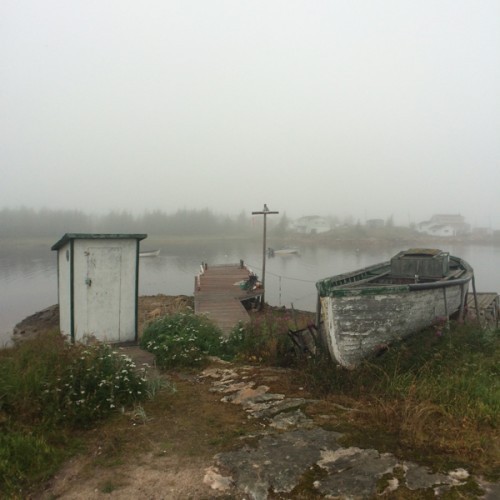
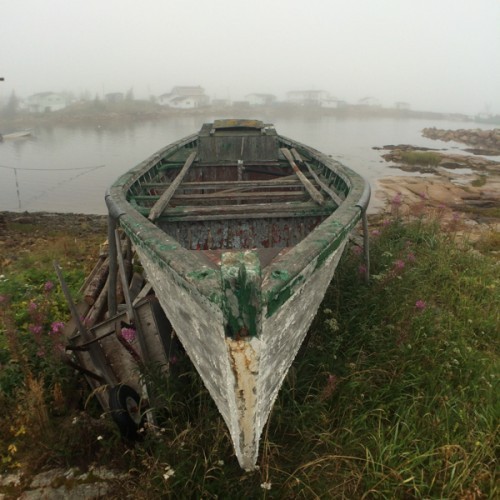
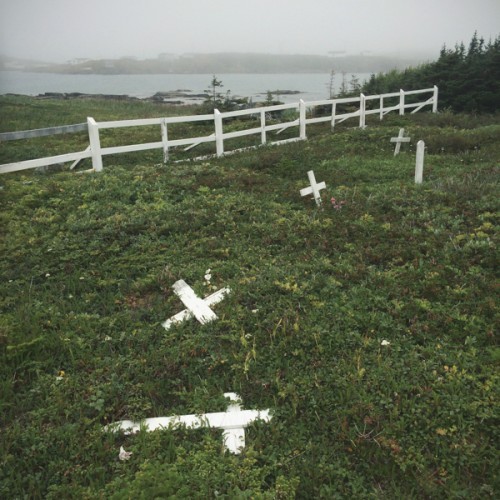

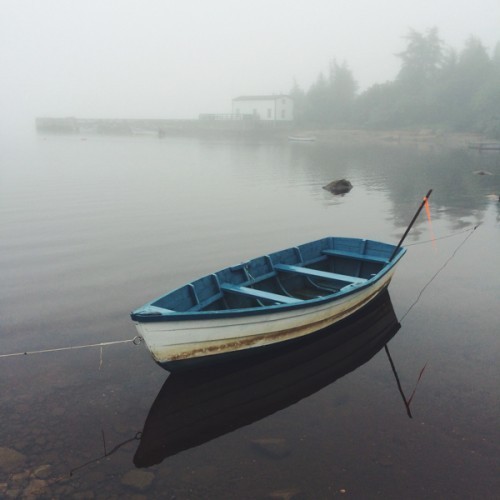
You can follow this adventure on Instagram without joining or otherwise selling your soul to them just by looking at my Instagram feed – I’ll update it more often than the blog which is a little harder to update on the road. See you soon!
August 13, 2014
PHOTOGRAPH, Issue 8
When I dreamed up this magazine, bouncing around Mongolia’s Gobi desert, two years ago, it was a big, crazy, What If. Now, with Issue 8, we’re celebrating two years with another beautiful issue, beginning with the work of my friend Ami Vitale, an exceptional storyteller and National Geographic photographer. We’re also featuring the fine art landscapes of Charles Adams, the documentary humanitarian work of Jon McCormack, and the abstracts of Tom McLaughlan, along with the usual excellent articles from John Paul Caponigro, Bruce Percy, Guy Tal, Chris Orwig, Martin Bailey, Piet Van den Eynde, Adam Blasberg, and my ongoing Without the Camera series.
As always, it’s really big, beautiful, and ad-free. We’re working hard to make this the best value in photographic instruction and inspiration, and to do that we’ve also decided to make this a bi-monthly magazine, giving you 6 great issues a year instead of 4. And hey, speaking of birthdays, and I don’t want to give away too much, this month Craft & Vision turns 5 years old and we’ll be celebrating. We will not be repeating last year’s Fairy Tale / Princess photoshoot, I’m sorry to say (but click the link if you didn’t see this last year, it’ll give you a laugh), but we’ll have some great deals for 5 days and the only way to get in on those is to be subscribed to The Contact Sheet, Craft & Vision’s way of bring you short, to the point, deals of the week, and features inspiration and resources. You can subscribe here so you don’t miss the sale.
PHOTOGRAPH Issue 8 is available today and if you pick it up in the next week, before 11:59 PM (PST) Tuesday, August 19, it’s yours for $6.40, saving you 20%.
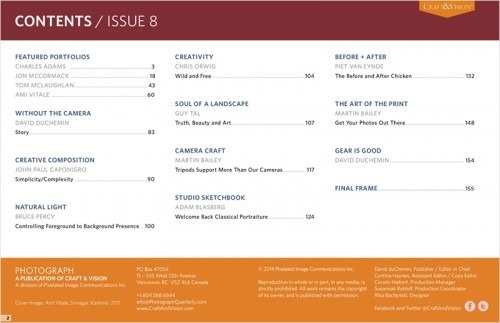
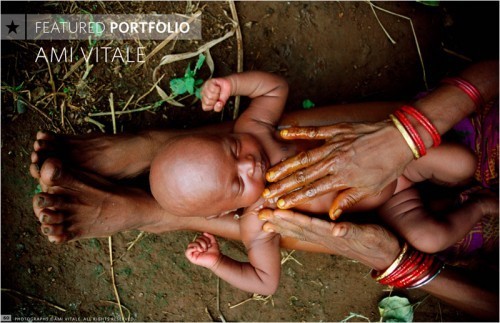
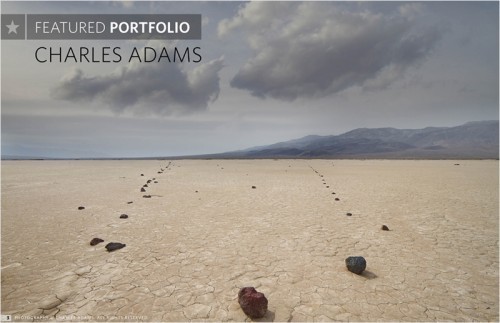
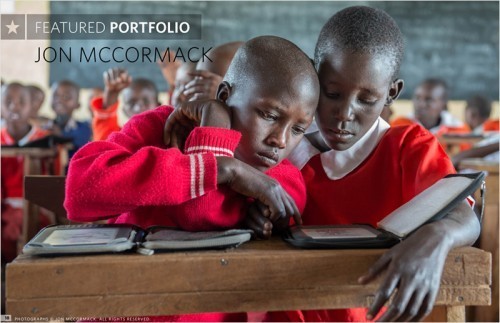
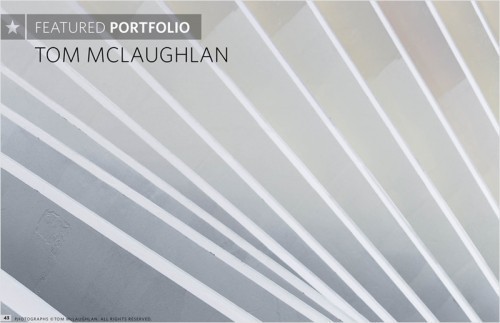
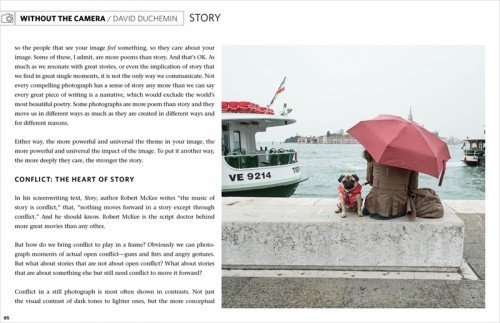
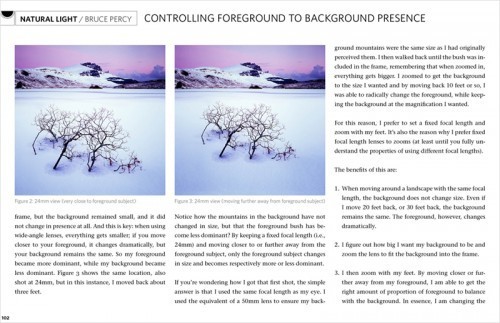
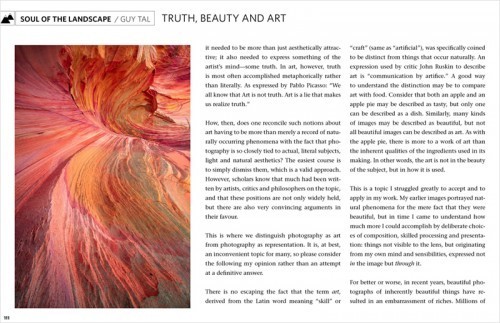
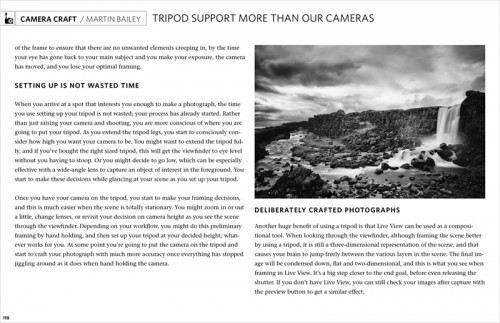
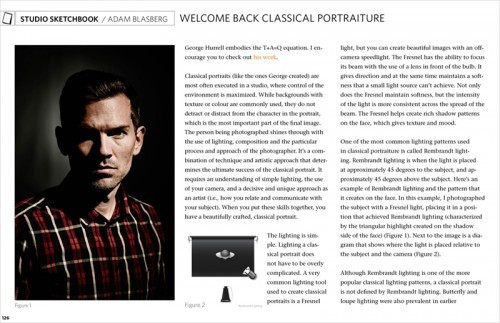
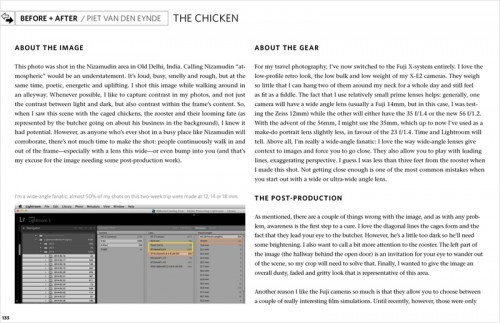
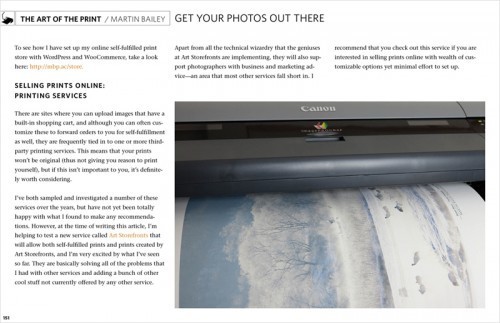
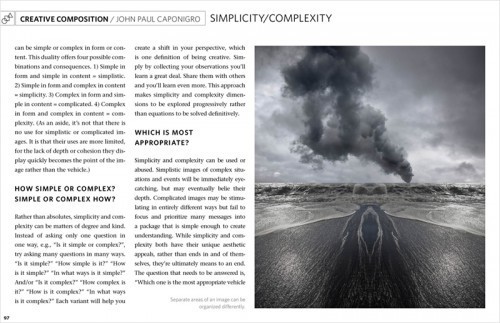
August 12, 2014
Process & Product
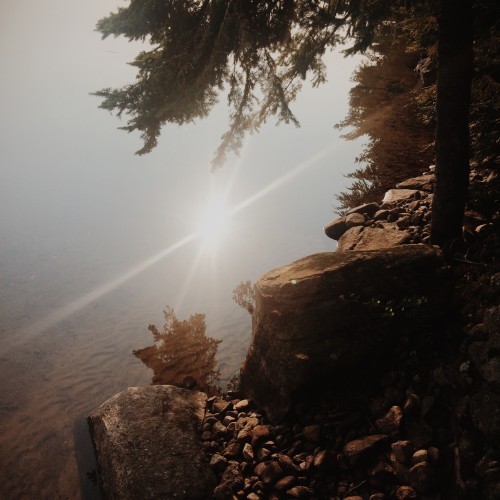
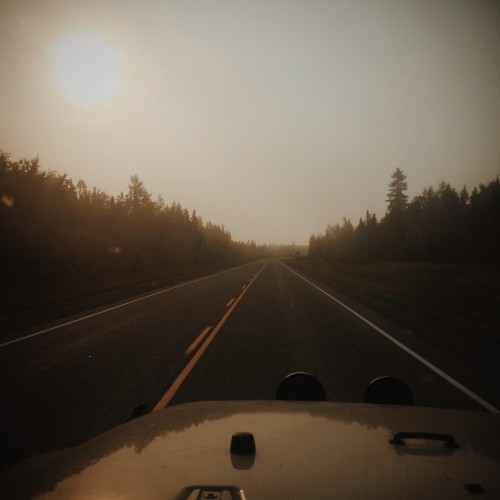
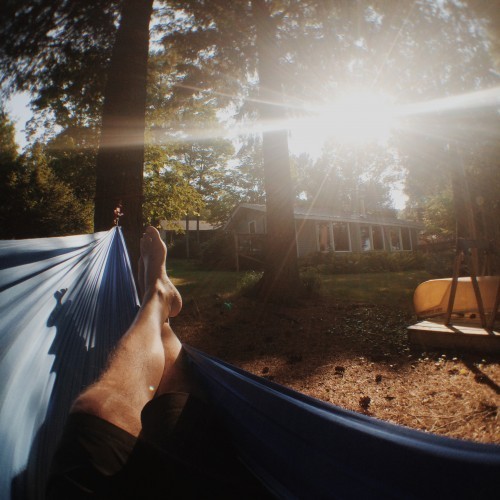
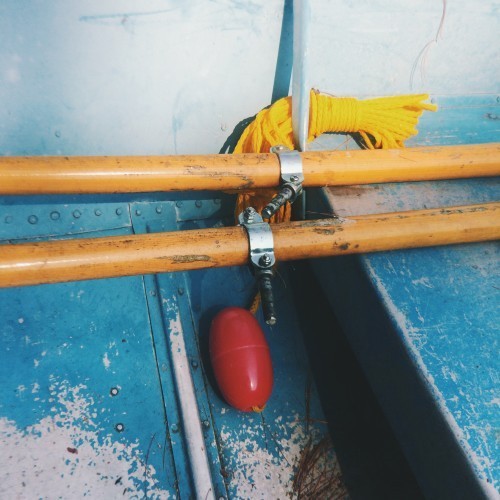
We’re stopping in Ottawa right now, after a couple days at the cottage, on the way to Labrador and Newfoundland to work on making images for my next coffee-table book. Emily, the Jeep, is in for service and tweaks, after 5500km and in preparation for many more on the rougher roads of rural Quebec and Labrador. What a journey we’re having. You can keep up with me on Instagram.
Read much about the art of writing and at some point you’re bound to wonder if a certain amount of masochism is required to enter the field. One reader on my blog, commenting on the way I’d been so transparent about my own frustrations (in this case concerning my photography) told me he was no longer interested in reading my blog because my angst exhausted him. And here I thought I was making it look easy. Making art is hard.
Very little work becomes, in the end, the thing we imagined it to be at the beginning. Like the artist that makes it, it evolves, reacts, and becomes something more than we once expected.
One writer said writing was easy: it only required sitting in front of a typewriter and opening a vein. Indeed. I think most things in life, the things that really matter, require us to bleed a little. To put ourselves so thoroughly into something can’t be easy. But if it’s so hard that we find no joy in it, why bother? For the joy of completion? For the praise of others? Those seem like poor incentives, given how often a work—whatever it is—never gets completed, and how seldom our finished work finds truly honest and lasting praise.
True, there’s a thrill in finishing the work, and seeing it published, or hanging on a wall, but too much time spent nurturing an addiction to completion risks rushing through the process of creation itself, sabotaging the very work we aim to see done. It is the process itself where we discover new things, and find the first hints about new directions. Very little work becomes, in the end, the thing we imagined it to be at the beginning. Like the artist that makes it, it evolves, reacts, and becomes something more than we once expected. Unless, in rushing to the end, we miss those chances to not only take the work in new directions, but to enjoy the process, and savour the challenge. It might not be enjoyment in the same way we enjoy a good glass of wine, but it can be a deep-down sense of being alive, of being stretched, of knowing you can do this without having the foggiest idea exactly how.
Creativity carries with it, necessarily, that sense of “this might not work” and freed from that, and from the frisson that comes with risk, putting yourself out there, and into this thing you’re making, whatever it is, the work loses its spark.
The same sabotage of process happens when we create merely for the praise of others. It’s true, even as adults, most of us long in some way to have our art put on the fridge and praised. There’s a thrill to knowing something we’ve done has struck a cord with others, and means something to someone outside our own heads. Who doesn’t long to be relevant, to be noticed? But if that’s where you find the joy, and not in the creative process itself, then it’s as likely as not that you’ll sabotage your own work.
Creativity carries with it, necessarily, that sense of “this might not work” and freed from that, and from the frisson that comes with risk, putting yourself out there, and into this thing you’re making, whatever it is, the work loses its spark. There can be no guarantee that anything we create will be praised, or even understood, so to labour through a process you do not love, and in which you find no joy, only to create something that may never bring you the adulation you want, or need, seems a waste of the few, uncertain days we have on this earth. Better to find something you love doing, and do it for the love of it, than to work so hard for an insatiable ego making something that might never feed it. Even when we do make something that strikes a chord, praise fades quickly and has diminishing returns.
Creation is work, at times hard work, and the product of our creative process often yields a low return on the investment. We sure as hell better love the process, and find some joy in the struggle itself because we’ll spend much more of our lives actively creating than we ever will looking at the final piece, or hearing how good it is from the lips of others. Pragmatically I’m arguing for more than just a feel-good love of the labour, though that’s reason enough to create. A preoccupation with the end product of our efforts takes us from the present moment in which we need to give ourselves over to the process, and robs us of the very thing we long for: finished work that’s bigger or better than we dared hope for. It is this way whether that work is a story, a painting, or raising a child. Art is created in the present, where nothing is guaranteed to us but the process of making it. If we stay in that moment and enjoy the full experience of it—if not because of the challenge then despite it—our work will be better for it.
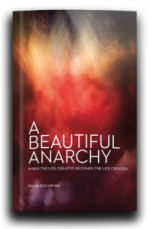 Process & Product is an excerpt from my latest book, A Beautiful Anarchy: When the Life Creative Becomes the Life Created. You can now get the paperback for only $14 from Amazon.com You can read more like this on the Beautiful Anarchy blog here.
Process & Product is an excerpt from my latest book, A Beautiful Anarchy: When the Life Creative Becomes the Life Created. You can now get the paperback for only $14 from Amazon.com You can read more like this on the Beautiful Anarchy blog here.
“A Beautiful Anarchy is a manifesto that has changed how I see the world. Read this book if you want to make more meaningful photographs and live a more complete life.”
~ Chris Orwig, author of Visual Poetry.
August 6, 2014
On The Road
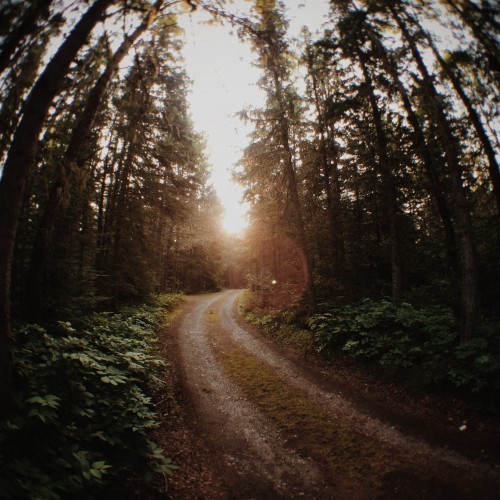
The road has always called to me; perhaps it’s part of bearing the last name, duChemin, all my life, which means “of the road.” It’s in my blood too, born to a mother who was a nurse in the RAF when she met my father, a Canadian soldier, both stationed in Cyprus in the late 1960s. Here on the road life gets simpler for me. It fosters wonder, too; full of the unexpected, there are new shadows. light, and moments, around every corner. Only 6 days into this trip across Canada, we’re 3700km closer to Newfoundland and Labrador than when we started and I can already feel myself waking up. Hard to describe, but free from the daily familiarity and routine, I feel more alive. I rise to the sounds of nature, the ravens and loons are my alarm clock. I’m more aware of the weather and the changes in light. I feel more connected.
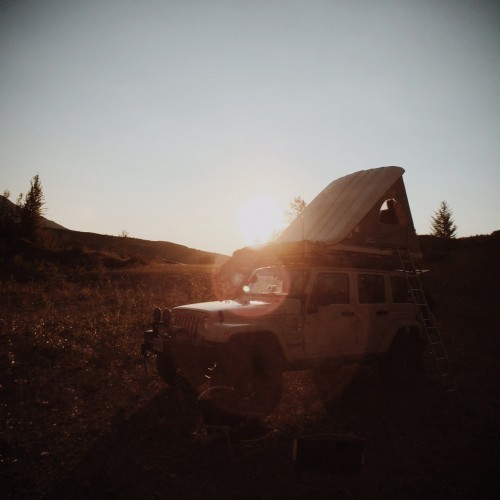
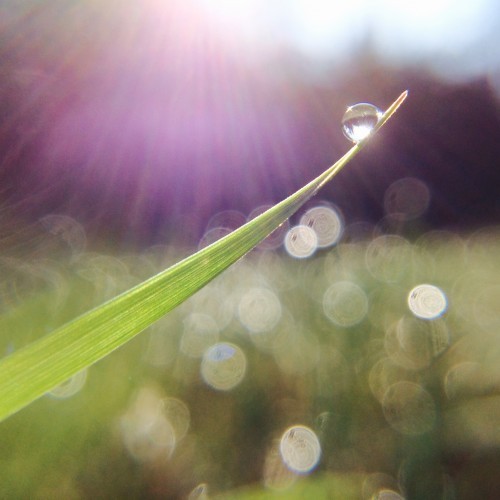
In a way, this trip is the completion of the trip I took with Jessie, my Land Rover, over 3 years ago, before it was cut short by my fall in Italy. I had wanted to circle the continent, making Newfoundland my easternmost stop, and spending some time there. It never happened. So now I’m trying again, called by the vastness and ruggedness of that coast and the remoteness of Labrador. I have no real plans, no real sense of what I’ll find. Just a calling that I can’t ignore. I’m going with the usual worries, that I won’t see anything that translates to a photograph, that whatever words I write won’t land, or that some accident might sabotage the journey. That’s happened before.
So far I’ve left the Leica in the bag and have had tremendous fun with my iPhone. Before I left I purchased an izzi Gadgets izzi Slim (the Orbit Pro is similar but made of metal and costs $250 instead of $130) iPhone case with 4 lenses on it. The lenses sit on a rotating unit and give me a 2x telephoto, a wide-angle, a fisheye, and a macro if I unscrew an element from the wide-angle. I’m in love with this thing. It gives me real lens flare, lots of options, and – most importantly – a sense of play.
I just heard that the box of books we sent Amazon has arrived. If you’re wanting a paperback copy of A Beautiful Anarchy, you can get it there for $14.00 and I think if you order $35 or more, shipping is free. You can get that here on Amazon.com.

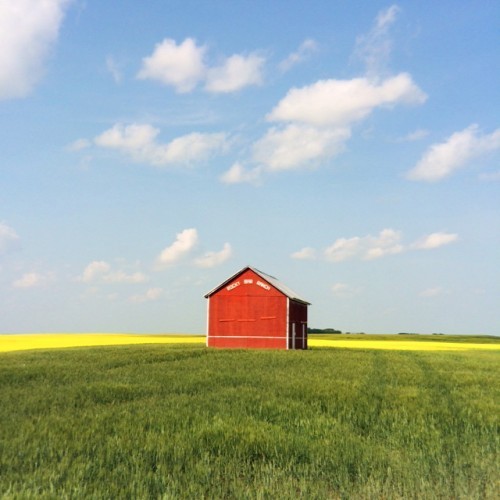
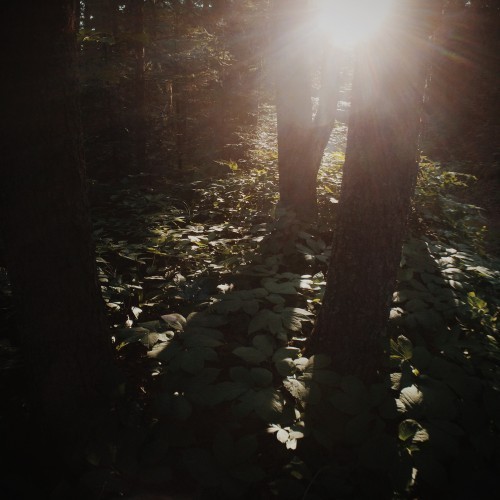
August 1, 2014
I’m Outta Here!

Today we packed the Jeep and hit the road. We’re heading east, across Canada to Newfoundland and Labrador, and won’t head west again until the autumn leaves begin to turn, coming back to Vancouver around October 15. Time for an adventure, some silence, and a chance to play with the light while camping for two and a half months.
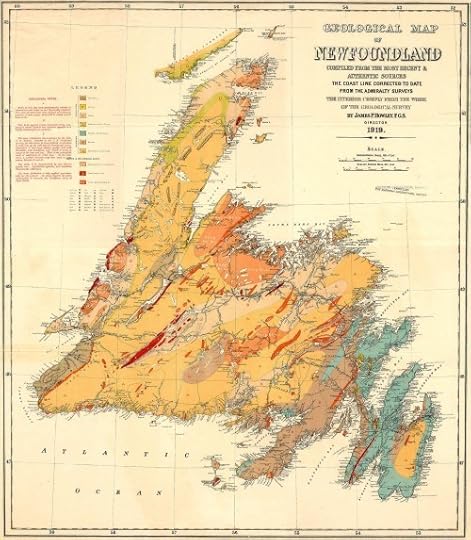
I’m taking my Fuji XE 1, my Leica M (240), and a couple lenses for each, some filters, a tripod, and my iPhone. Not much of a packing list, I’m afraid. It’s funny how my approach has changed over the years, and while there will be times when I travel with a tonne of gear again, like the Polar Bear trip in November, this is not one of those trips. I can put it all into a small GuraGear Bataflae bag that weighs half what my usual load is.
If you’re looking for me, I’ll be here once in a while with stories and photographs from the road, as well as writing on the new Beautiful Anarchy blog and on Instagram. I’ll try not to overwhelm you with road trip photographs of Emily, the Jeep, but this trip has been a long, long time coming. I’ll try to get it out of my system quickly, but I’m not guaranteeing anything. 

Look for something about once a week here, including the September 10 launch of How To Feed a Starving Artist, A Financial Field Guide for Creatives, Solopreneurs, and Other Anarchists, which I’m chomping at the bit to get out into the world because the freedom I’ve found in recovering from profound financial mismanagement has been one of the greatest freedoms of my life, allowing me to do the work I love, see this whole vast earth that I love, and help others do the same. I hope the same for everyone, and How To Feed a Starving Artist is my way of talking about money with people who really, really, don’t like talking about money, but need to. It’ll only be $10, because I hate the idea of soaking people that want to learn about this stuff, and it’ll be available as a PDF or Kindle version.
See you on the road!